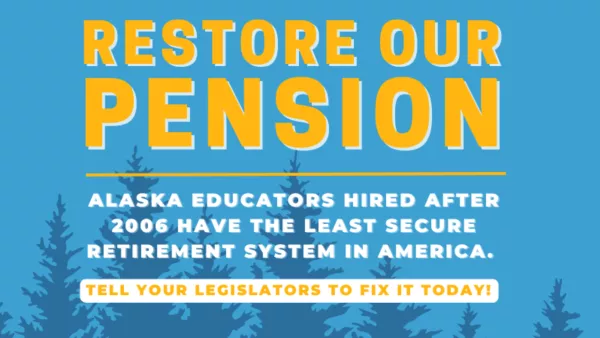Take Action
Adapt this sample message to tell your story about how our broken retirement system has impacted you, your family, your students, and your school community.
NEA-Alaska has been leading the fight to restore a defined benefit retirement option for all public employees since 2006. Here's why:
- Most Alaska public school employees don't have access to a pension or Social Security. bit.ly/allstatesteacherretirement
- 69% of Alaska educators are projected to outlive their retirement savings. bit.ly/AKmontecarlo
- Legislation to offer a pension option is projected to save the State of Alaska $76 million every year. bit.ly/AKGhilarduccireport
- A modest retirement system will increase retention and save Alaska the cost of recruiting and training new educators.
Thank you for taking the time to contact your legislators today.
